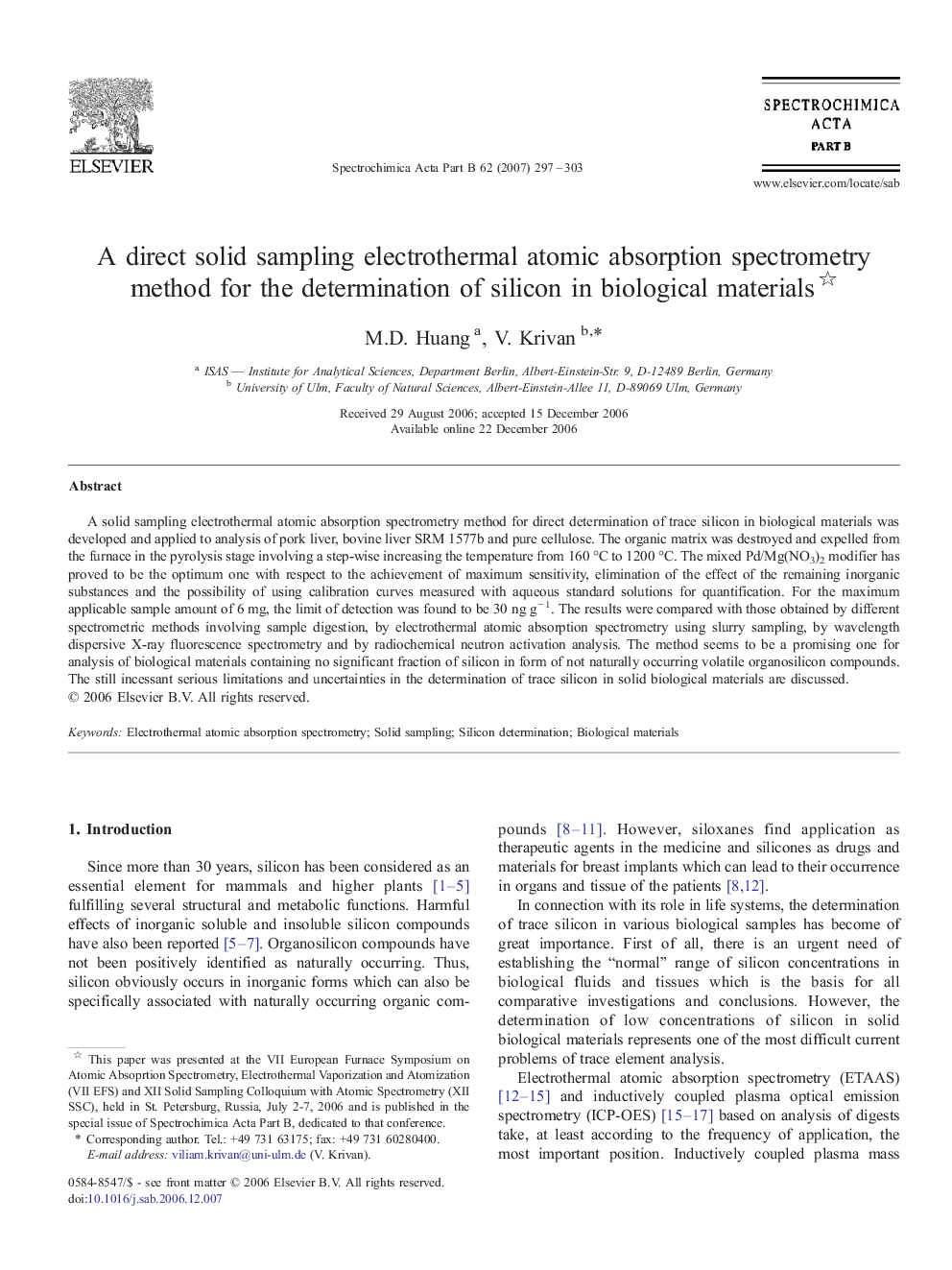| Article ID | Journal | Published Year | Pages | File Type |
|---|---|---|---|---|
| 1240576 | Spectrochimica Acta Part B: Atomic Spectroscopy | 2007 | 7 Pages |
A solid sampling electrothermal atomic absorption spectrometry method for direct determination of trace silicon in biological materials was developed and applied to analysis of pork liver, bovine liver SRM 1577b and pure cellulose. The organic matrix was destroyed and expelled from the furnace in the pyrolysis stage involving a step-wise increasing the temperature from 160 °C to 1200 °C. The mixed Pd/Mg(NO3)2 modifier has proved to be the optimum one with respect to the achievement of maximum sensitivity, elimination of the effect of the remaining inorganic substances and the possibility of using calibration curves measured with aqueous standard solutions for quantification. For the maximum applicable sample amount of 6 mg, the limit of detection was found to be 30 ng g− 1. The results were compared with those obtained by different spectrometric methods involving sample digestion, by electrothermal atomic absorption spectrometry using slurry sampling, by wavelength dispersive X-ray fluorescence spectrometry and by radiochemical neutron activation analysis. The method seems to be a promising one for analysis of biological materials containing no significant fraction of silicon in form of not naturally occurring volatile organosilicon compounds. The still incessant serious limitations and uncertainties in the determination of trace silicon in solid biological materials are discussed.
